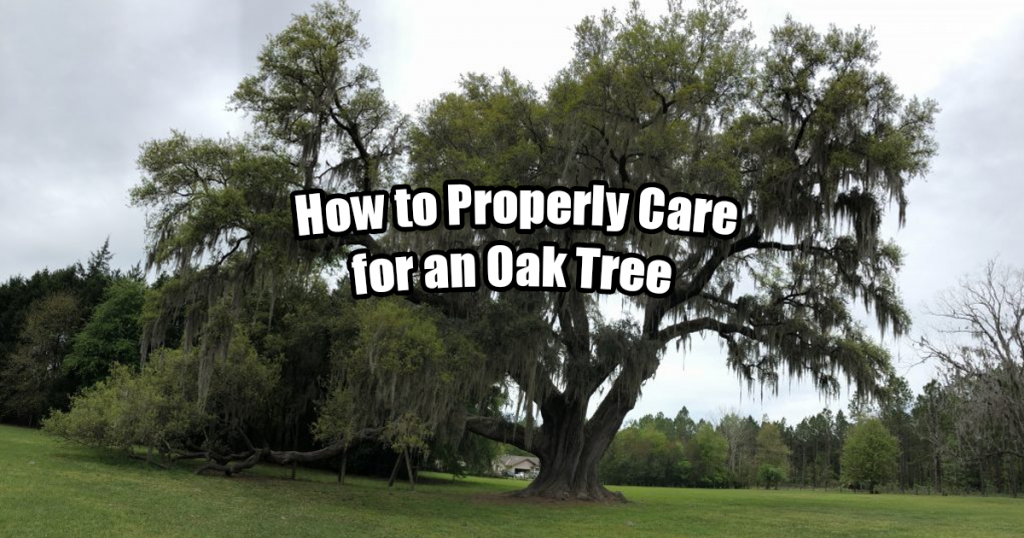
Oak trees are well known for their leafy branches and round shapes. These robust plants offer vibrant color during the fall and cool shade in the summer. Most Oak trees are situated in USDA zones 6 through 10 depending upon the species. In the forest, companion plants will often thrive under oak trees when the ground is wet but tend to die off in the warmer months when oak trees have the highest need for moisture. Overall, oak trees tend to be very low maintenance with a need for watering only once a month and pruning once per year.
Oak Trees General Care
Oak trees grow best when they are planted in moist but well-draining soil. They need full sun to reach their full potential but can survive in partial sun. Oak trees are very resilient and handle seasonal weather changes magnificently. They are able to stand strong in moist winters as well as dry summers. In moist climates, there is no need to water the oak in the winter, but for dry areas, a slow drip is recommended.
All oak trees need to be planted at least six to eight feet apart to allow for proper ventilation. Adding a few inches of mulch to the base will also prevent dehydration and help to enrich the soil with tree boosting nutrients. Just make sure to water them at least once a month in the summer and trim them annually in mid-fall.
How Much Water & Sun Do Oak Trees Need?
Oak trees thrive in moist and warm climates. The best place to plant an oak tree is in full sun where they can soak up at least six hours of sunlight each day. It is also important to make sure they are given ample space between them and other trees so that they have plenty of breathing space. Oak trees do consume a lot of water, so any companion plants near the tree should be drought tolerant. The best way to keep an oak tree well-watered is by maintaining at least three inches of mulch at the base to prevent dehydration.
Young oak trees need a large amount of water to support proper growth. It is still important not to over saturate the roots or you risk root rot. Mature oak trees need to be watered generously once a month around the base of the tree and the canopy perimeter. In the winter, like most trees oaks fall dormant. They do not need to be watered, but it is recommended to install a drip system around the tree to allow for gradual watering.
The Importance Of Proper Pruning
Trees need to be pruned on a regular basis to keep dead or weak branches from causing harm or stunting growth. Oak trees also benefit from regular pruning. Even without a regular trim oak trees will develop an attractive natural shape. Pruning is the best way to manage tree size and prevent pest infestations and disease. Never prune the branch collar of an oak tree and wait until mid-fall or at least August to prune your oak trees.
Need help pruning your oak trees? We specialize in this!
Fertilizing Your Oak Trees
Fertilizing is one of the most important steps when it comes to oak tree care. If there is a land disturbance, uprooting, or a newly planted tree special care need to be taken. This will help the trees to grow and thrive in their environment. Proper fertilization allows the oak to control the nitrogen and other minerals that support growth and healthy foliage.
Immature oak trees need to be fertilizer to trigger proper growth while mature oak trees will benefit from regular fertilization. Fertilize your trees once each season just before the rain. This will allow the rain to spread the fertilizer to all of the roots. A balanced fertilizer that is a mix of potassium, phosphorus, and nitrogen is ideal.
Oak Tree Pruning Methods & Requirements
Oak trees just like other deciduous trees will benefit from a regular trim. If you happen to have an evergreen oak tree, they only need to be pruned if there is damage, disease, or other problems with their limbs. Always prune oak trees when they are dormant in the winter. This will give the tree time to heal its wounds, and it will also support new growth during the spring. Never prune oak trees in the spring. This is the main season that small beetles are active, and they have a chance of spreading fungal diseases. Fungal problems can cause leaf discoloration and even trigger death in your oak tree.
Pruning oak trees is simple because they require very little actual care. If you are a property owner who loves a full canopy but can’t dedicate much time to maintenance, oak trees are a great fit. It is a good idea to leave oak tree pruning to a professional tree care company to prevent damage or over trimming.
Inspecting Your Oak Trees
Oak trees are very resilient but just like any tree or plant, they are susceptible to natural diseases. Pests such as insects and vermin can also harm the health of your tree if they are allowed to take up residence. Inspecting your oak trees and your landscape is an important part of any proper maintenance plan. Either you or a tree care specialist should perform visual inspections at last once every season.
During these inspections, you will need to examine the leaves, bark, roots, and other areas around the oak tree. Check for cracks in the bark, but keep in mind fissures are normal a sign that you have a healthy oak tree. Discolored bark and flaking bark is a sure sign that your oak tree may be in distress. This may be caused by insects, fungus, or another disease. Healthy oak tree bark has a greenish-brown appearance. If you notice any problems, get in touch with a trained arborist as soon as possible for proper diagnosis and treatment.
